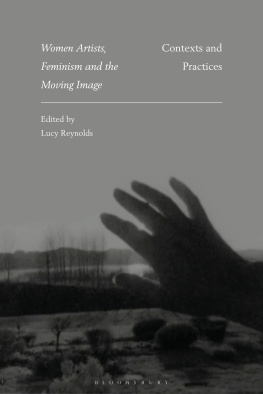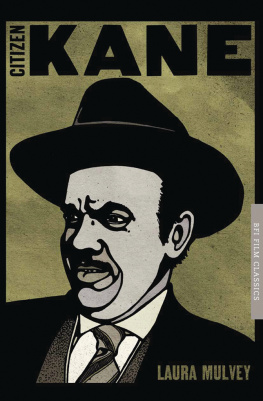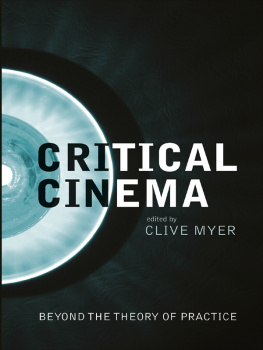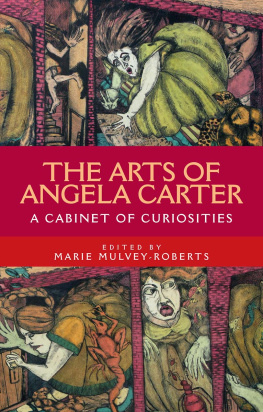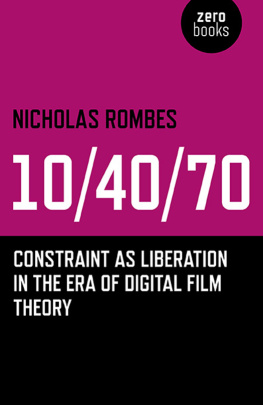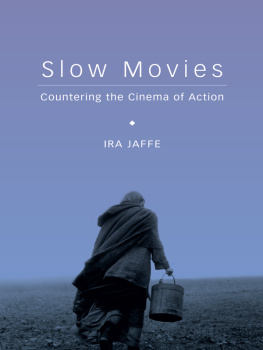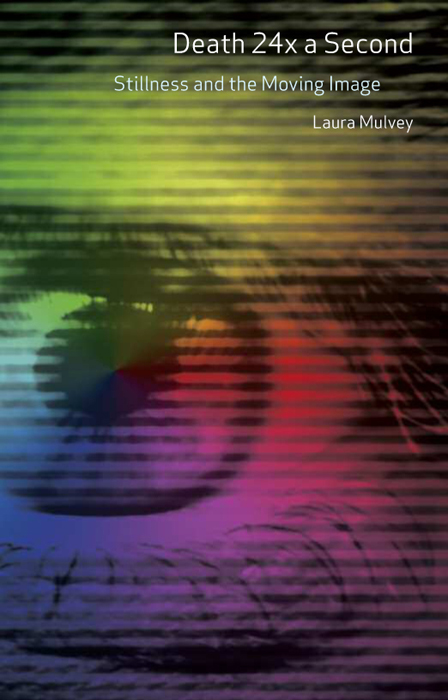Death 24x a Second
Stillness and the Moving Image
Laura Mulvey

REAKTION BOOKS
Between past and future. For Zoe Wollen, born 2003, and in memory of her
great-grandmother Sylvia Mulvey, 19082000.
Published by Reaktion Books Ltd
33 Great Sutton Street
London EC1V ODX
www.reaktionbooks.co.uk
First published 2006
Copyright Laura Mulvey 2006
All rights reserved
No part of this publication may be reproduced, stored in a retrieval system, or transmitted, in any form or by any means, electronic, mechanical, photocopying, recording or otherwise, without the prior permission of the publishers.
Page references in the Photo Acknowledgements and Index match the printed edition of this book.
Printed and bound in Great Britain by Biddles Ltd, Kings Lynn
British Library Cataloguing in Publication Data
Mulvey, Laura
Death 24 X a second: stillness and the moving image
1. Motion pictures Philosophy 2. Stills (Motion pictures)
I. Title
791.4301
ISBN10: 1 86189 263 2
Contents
Preface
When I first started writing about cinema, in the early 1970s, films had always been seen in darkened rooms, projected at 24 (or thereabouts) frames a second. Only professionals, directors and editors had easy access to the flatbed editing tables that broke down the speed needed to create the illusion of natural movement. By the end of the twentieth century ways of consuming cinema had multiplied and the regulation of its speed had been widely extended. Then, in the 1970s, I was preoccupied by Hollywoods ability to construct the female star as ultimate spectacle, the emblem and guarantee of its fascination and power. Now, I am more interested in the way that those moments of spectacle were also moments of narrative halt, hinting at the stillness of the single celluloid frame. Then, I was concerned with the way Hollywood eroticized the pleasure of looking, inscribing a sanitized voyeurism into its style and narrative conventions. Now, I am more interested in the representations of time that can be discovered in the relation between movement and stillness in cinema. Then, I was absorbed in Hollywood cinema, turning to the avant-garde as its binary opposite. Now, I think that the aesthetics of cinema have a greater coherence across its historic body in the face of new media technologies and the new ways of watching films that they have generated.
These contrasts between then and now are not intended to indicate a detachment from the past but rather to emphasize that my engagement with the cinema of the past has been changed by passing time. In the first chapter of this book, I discuss ways of looking back to the past but through an altered perspective, informed by the problems and possibilities of the present. My point of departure is an obvious, everyday reality: that video and digital media have opened up new ways of seeing old movies. The unexpected encounters that emerge out of this meeting of technologies are familiar to anyone who has experimented with them, from film scholar to film fan. But behind this initial engagement between present and past lies a more rhetorical one. A return to the cinemas past constitutes a gesture towards a truncated history, to those aspects of modernist thought, politics and aesthetics that seemed to end prematurely before their use or relevance could be internalized or exhausted. These histories have been deeply interwoven with the history of cinema. Such a return to the past through cinema is paradoxically facilitated by the kind of spectatorship that has developed with the use of new technologies, with the possibility of returning to and repeating a specific film fragment. Return and repetition necessarily involve interrupting the flow of film, delaying its progress, and, in the process, discovering the cinemas complex relation to time. Needless to say, there is nothing fundamentally new here. To see cinema through delay is to discover a cinema that has always been there, either overtly in the experiments of the avant-garde or more covertly in the great range of fiction film.
In this sense, this book is about a changed perspective, the way that my perception of cinema has changed between then and now and the way that, within the context of the present, the representation of time has taken on new significance. My examples and discussion of, for instance, stillness are drawn as much from the cinema of the past as they are drawn from new mechanisms of delay. Delayed cinema works on two levels: first of all it refers to the actual act of slowing down the flow of film. Secondly it refers to the delay in time during which some detail has lain dormant, as it were, waiting to be noticed. There is a loose parallel here with Freuds concept of deferred action (nachtraglichkeit), the way the unconscious preserves a specific experience, while its traumatic effect might only be realized by another, later but associated, event. Freud developed his thoughts on deferred action out of his analyses of the problem of sexuality in human development. A small child might well not understand the significance of a sexual encounter or witnessed event. Later, however, after the onset of sexual maturity, a similar experience may reactivate the significance of this memory, forgotten and stored in the unconscious. The cinema (like photography) has a privileged relation to time, preserving the moment at which the image is registered, inscribing an unprecedented reality into its representation of the past. This, as it were, storage function may be compared to the memory left in the unconscious by an incident lost to consciousness. Both have the attributes of the indexical sign, the mark of trauma or the mark of light, and both need to be deciphered retrospectively across delayed time.
In common with other film theory today, this book is heavily marked by the image of, and the questions raised by, the photographic index. While technology never simply determines, it cannot but affect the context in which ideas are formed. Inevitably, the arrival of digital technology has given a new significance to the representation of reality and precipitated a return to the semiotic theory of the index. In the semiotic system elaborated by C. S. Peirce, an icon is a recognizable sign. It refers to the thing it represents through similarity. A symbol is a decipherable sign; it refers to the thing it represents by means of conventions or codes. An index, however, is a sign produced by the thing it represents. An indexical sign might be recognizable through similarity, as, for instance, in a footprint, and thus have shared qualities with the icon. Or it might be decipherable through a code, as, for instance, in the shadow cast by a sundial, and thus have shared qualities with the symbol. But something must leave, or have left, a mark or trace of its physical presence. Whether it persists, as in the then-ness of a preserved fingerprint, or not, as in the now-ness of a sundials shadow, the thing inscribes its sign at a specific moment of time. Thus, the index has a privileged relation to time, to the moment and duration of its inscription; it also has a physical relation to the original of which it is the sign. While the photographic image, in semiotic terms, usually includes the iconic and often includes symbolic aspects of the sign, its aesthetic specificity is grounded on the index. The photograph cannot generalize. While written (symbolic) or graphic (iconic) representations can evoke a class of things, a photographic image is always of one specific and unique, although, of course, endlessly reproducible, thing. A return to the index and to the real of the photographic medium is not a return to realisms aspiration to certainty. Rather, the trace of the past in the present is a document, or a fact, that is preserved in but also bears witness to the elusive nature of reality and its representations. It is here that the reality of the photograph as index becomes entwined with the problem of time.


